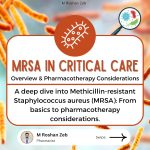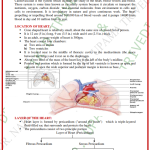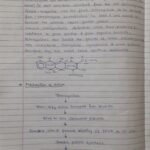MANUFACTURING AND EVALUATION
OF PARENTERALS
SUBMITTED TO- SUBMITTED BY-
DR. YASMIN SULTANA ANJALI
DEPTT OF PHARMACEUTICS M PHARM 1 SEM
DEPTT OF PHARMACEUTICS
JAMIA HAMDARD
NEW DELHI
INTRODUCTION:
Parenteral refers injectable route of administration.
It derived from Greek words Para (Outside) and enteron
(Intestine).
So, it is a route of administration other than the alimentary canal.
This route of administration bypasses the alimentary canal.
Parenteral preparations are sterile, pyrogen-free liquids (solutions,
emulsions, or suspensions) or solid dosage forms containing one or
more active ingredients, packaged in either single-dose or multi-
dose containers.
They are intended for administration by injection, infusion, or
implementation into the body. Parenteral drugs are administrated
directly into veins, muscles or under the skin or more specialized
tissues such as the spinal cord.
Types of parenterals preparation
Based on types of packaging
1)Single dose units: ampoules, infusions and
prefilled disposable syringes
2)Multiple dose units: multiple dose vials
Based on the production and control
a)Small volume parenterals: volume < 100 ml
b)Large volume parenterals: volume ≥ 100 ml•
Based on clinical use
a)Solutions for irrigation
b)Ophthalmic solution
c)Dialysis solution
d)Diagnostic agent
e)Allergenic extracts f)Implants
Based on physical state of product
a)Sterile solutions
b)Sterile suspensions
c)Sterile emulsions
d)Sterile solid
Parenteral routes
Intravenous
Intramuscular
Subcutaneous
Intradermal
Intra-arterial
Intracardiac
Intrathecal
Intracisternal
Peridural
Intraarticular
Intracerebra
PRIMARY PARENTERAL ROUTES
Necessities of Parenteral preparations:
Sterility (must)
Pyrogen (must)
Free from particulate matter (must)
Clarity (must)
Stability (must)
Isotonicity (should)
Solvents or vehicles used must meet special purity and
other standards.
Restrictions on buffers, stabilizers, antimicrobial
preservative. Do not use coloring agents.
Must be prepared under aseptic conditions.
Specific and high quality packaging.
TYPES
Various forms of parenteral preparations:
Drug injection
Drug for injection
Drug injectable emulsion
Drug injectable suspension
Drug for injectable suspension
Intravenous infusions (large volume parenterals),
Powders for injections
Implants injections and intravenous infusions may be
presented in the form of sterile concentrated solutions,
which must be suitably diluted before use
PARENTERALS AS PHARMACEUTICALS
ADVANTSGES DISADVANTAGES
Quick onset
Wrong dose can be fatal
Vomiting and unconscious
patients can take Pain at site
Prolonged action by modified
Expensive
formulation ( Depot)
Trained person required
Nutritive fluids (glucose,
electrolytes) can be given
Necessity of aseptic
Drugs with poor absorption or condition in production,
instability from GIT
compounding and
administration
INTRODUCTION
Small Volume Parenteral
According to USP : “ an injection that is packaged in
containers labelled as containing 100 ml or less” .
According to the USP 24/ NF 19 “As those
preparations intended for injection through the skin
or other external boundary tissue, rather than
through the alimentary canal” So that the active
substance they contain are administered using gravity
or force directly into a blood vessel,organ,tissue or
lesion.
All the sterile products packaged in vials, ampoules,
cartridges, syringes, bottles or any other container that is
100ml or less fall under the class of SVP.
Ophthalmic products packaged in squeezable plastic
containers, although topically applied to the eye rather than
administered by injection, also fall under the classification
of Small Volume Injections (SVI) as long as the container size
is 100ml or less.
SVP aqueous solutions can be administered by intravenous
route because of local irritation.
LARGE VOLUME PARENTERALS
Large volume parenterals are designed to be
provide-
Fluid
Calories(dextrose solution)
Electrolytes
Combination of these two
Volume 101-1000 ml
DIFFERENCE BETWEEN SMALL VOLUME PARENTERALS AMD LARGE VOLUME PARENTERALS
OVERVIEW OF
MANUFACTURING
PROCESS OF
PARENTERALS
FLOW OF MATERIALS THROUGH PRODUCTION
DEPARTMNENT
Layout of Parenteral Processing
Formulation of parenteral products
In the preparation of parenteral products, the following substances are
added to make a stable preparation:
The active drug
Vehicles
Aqueous vehicle (e.g. water for injection, water for injection free from
carbondioxide)
Non-aqueous vehicle (e.g. Ethyl alcohol, propylene glycol, almond oil)
Adjuvants
Solubilizing agents (e.g. Tweens & polysorbates)
Stabilizers & antioxidants (e.g. thiourea, ascorbic acid, tocopherol)
Buffering agents (e.g. citric acid, sodium citrate)
Antibacterial agents (e.g. benzyl alcohol, metacresol, phenol)
Suspending, emulsifying & wetting agents (e.g. MC, CMC)
Chelating agents (e.g. EDTA)
Tonicity factor (e.g. sodium chloride, dextrose)
Formulation of SVP :
• Aqueous vehicle
Types :- purified water, WFI, sterile WFI, bacteriostatic WFI, sterile WF
Irrigation.
Preparation :- Distillation, ion exchange or reverse osmosis.
Except purified water all are pyrogen free
• Non aqueous vehicle :
Because of safety, purity, biocompatibility.
Several SVPs are marketed as oily solutions
The oil must be vegetable in origin (sesame, olive, or
cottonseed oil).
Product USP Oil
Ampicillin(suspension) Vegetable
Diethyl stilbesterol Sesame, cotton
Epinephrine(suspension) Sesame
Penicillin G procaine Vegetable (suspension)
Co solvents :
Are used to increase the stability of poorly soluble drug in water and
prevent drug chemical degradation by hydrolysis. eg. propylene
glycol or in combination with ethanol and polyethylene glycol.
Ingredients or added substances
Antimicrobial preservatives
Maintain the stability of the product during storage.
Eg. Phenylmercuric nitrate and Thimerosal 0.001% , Benzethonium
chloride 0.01%, Benzyl alcohol 0.5- 10.0%, Phenol or cresol 0.5%,
chlorobutanol 0.5%.
Buffers
• Added to maintain pH Results in stability of drug against
hydrolytic degradation or enhance the solubility of drug in
solution.
• Common buffers used in SVPs
pH Buffer system Conc. %
3.5-5.7 Acetic acid-acetate 0.22
2.5-6.0 Citric acid-citrate 0.5
6.0-8.2 Phosphoric acid – phosphate 0.8-2
8.2-10.2 Glutamic acid-glutamate 1-2
Antioxidants : Antioxidants function by preferentially with molecular
oxygen and minimizing or terminating the free radical auto-oxidation
reaction. eg. Reducing agents: Ascorbic acid 0.02-0.1%, Sodium
Bisulfite 0.1-0.15%, Thiourea 0.005% Blocking agents: Ascorbic acid
esters 0.01 – 0.015%, Tocopherols 0.05 – 0.075%
Tonicity adjusters :
• Electrolytes: Nacl
• Non electrolytes: Glucose, Mannitol, Glycerine
• Eg. Of isotonic: Dextrose injection 5% & Nacl injection 0.9%
• Some solutions are iso-osmotic but not isotonic this is because the
physiology of the cell membranes must be considered.
• For eg. the cell membrane of the RBC is not semipermeable to all
drugs it allows ammonium chloride, alcohol, boric acid, glycerin,
propylene glycol, and urea to diffuse freely.
• In the eye the cell membrane is semi permeable to boric acid and a
2% solution is an isotonic ophthalmic solution.
But even though a 2% solution of boric acid is an isotonic with
the eye and is iso-osmotic, it is not isotonic with blood since
boric acid can freely diffuse through the RBC– and it may
cause HEMOLYSIS. Tonicity can be measurement by:
osmometer
Other ingredients :
• Bulking agents – for freeze dried preparations(solids) eg
mannitol, lactose sucrose, dextrose.
• Suspending agents – Carboxy methyl cellulose, sorbitol.
• Emulsifying agents – lecithin, polysorbate 80
• Ophthalmic ointments bases – petrolatum.
Production facilities of parenterals
• The production area where the parenteral
preparation are manufactured can be divided into
five sections:
Clean-up area
Preparation area
Aseptic area
Quarantine area
Finishing & packaging area
Clean-up area:
It is not aseptic area.
All the parenteral products must be free from foreign particles &
microorganism.
Clean-up area should be withstand moisture, dust & detergent.
This area should be kept clean so that contaminants may not be
carried out into aseptic area.
Preparation area:
In this area the ingredients of the parenteral preparation are mixed
& preparation is made for filling operation.
It is not essentially aseptic area but strict precautions are required
to prevent any contamination from outside.
Aseptic area:
The parenteral preparations are filtered, filled into
final container & sealed should be in aseptic area.
The entry of personnel into aseptic area should be
limited & through an air lock.
Ceiling, wall & floor of that area should be sealed &
painted.
The air in the aseptic area should be free from fibers,
dust and microorganism.
The High efficiency particulate air filters (HEPA) is
used for air.
UV lamps are fitted in order to maintain sterility.
Quarantine area:
After filling, sealing & sterilization the parenteral product
are held up in quarantine area.
Randomly samples were kept foe evaluation.
The batch or product pass the evaluation tests are transfer
in to finishing or packaging area.
Finishing & packaging area:
Parenteral products are properly labelled and packed.
Properly packing is essential to provide protection against
physical damage.
The labelled container should be packed in cardboard or
plastic container.
Ampoules should be packed in partitioned boxes
EVALUATION OF PARENTERAL
PREPARATIONS
The finished parenteral products are subjected
to the following tests, in order to maintain
quality control:
A) Sterility test
B) Clarity test
C) Leakage test
D) Pyrogen test
E) Assay
A) Sterility test
It is a procedure carried out to detect and conform absence
of any viable form of microbes in or on pharmacopeia
preparation or product.
Method of sterility testing
1. METHOD 1 Membrane filtration method
2. METHOD 2 Direct inoculation method
Membrane filtration method (METHOD 1):
Membrane filtration Appropriate for : (advantage)
• Filterable aqueous preparations
• Alcoholic preparations
• Oily preparations
• Preparations miscible with or soluble in aqueous or oily
(solvents with no antimicrobial effect)
All steps of this procedure are performed aseptically in a
Class 100 Laminar Flow Hood
Direct inoculation method (METHOD 2):
Suitable for samples with small volumes
volume of the product is not more than 10% of the
volume of the medium
suitable method for aqueous solutions, oily
liquids, ointments and creams
Direct inoculation of the culture medium suitable
quantity of the preparation to be examined is
transferred directly into the appropriate culture
medium & incubate for not less than 14 days.
COMPOSITION OF CULTURE MEDIA FOR STERILITY TESTING
PROCEDURE FOR STERILITY TEST
B)Clarity test
• Particulate matter is defined as unwanted mobile
insoluble matter other than gas bubble present in
the product.
• If the particle size of foreign matter is larger than
the size of R.B.C.. It can block the blood vessel.
• The permit limits of particulate matter as per I.P.
are follows:
Methods for monitoring
particulate matter
contamination:
1)Visual method
2)Coulter counter method
3)Filtration method
4)Light blockage method
C)leakage test
• The sealed ampoules are subjected to small cracks which
occur due to rapid temperature changes or due to mechanical
shocks.
Filled & sealed ampoules
Dipped in 1% Methylene blue solution Under negative pressure
in vacuum chamber
Vacuum released colored solution enter into the ampoule
Defective sealing
Vials & bottles are not suitable for this test because the sealing
material used is not rigid
D)Pyrogen test
Pyrogen = “Pyro” (Greek = Fire) + “gen” (Greek =
beginning).
Fever producing, metabolic by-products of microbial
growth and death.
Bacterial pyrogens are called “Endotoxins”. Gram
negative bacteria produce more potent endotoxins than
gram + bacteria and fungi.
Endotoxins are heat stable lipopolysaccharides (LPS)
present in bacterial cell walls, not present in cell-free
bacterial filtrates
Method
Dissolve the subs.being examined in, or dilute it with a pyrogen free
saline solution
Warm the liquid being examined to approx. 38.5o C temp before
injection
The volume of injection is NLT 0.5ml/kg & NMT 10ml/kg of body
weight
Withhold water during test
Clinical thermometer is inserted into the rectum of rabbit to record
body temp
2 normal reading of rectal temp are should be taken prior to the test
injection at an interval of half an hr & its mean is calculated- initial
temp
The solution under test is injected through an ear vein
Record the temp of each rabbit in an interval of 30 min for 3 hrs
The difference between initial temp & maximum temp is recorded-
taken as response
Limulus amebocyte lysate [LAL] test
• Limulus amebocyte lysate [LAL] test another
method for the determination of pyrogenic
endotoxins
• In this method the test solution is combined with a
cell lysate from the ameabocyte [blood cells] of
horse shoe crab
• Any endo toxin that might be present will be
coagulated with protien fraction of the ameabocytes
and results in the formation of a gel
• This consider to be simple,rapid and of greater
sensitivity that the rabbit test
E) Assay
• Assay is performed according to method
given In the monograph of that parental
preperation in the pharmacopoeia
• Assay is done to check the quantity of
medicament present in the parenteral
preparation




